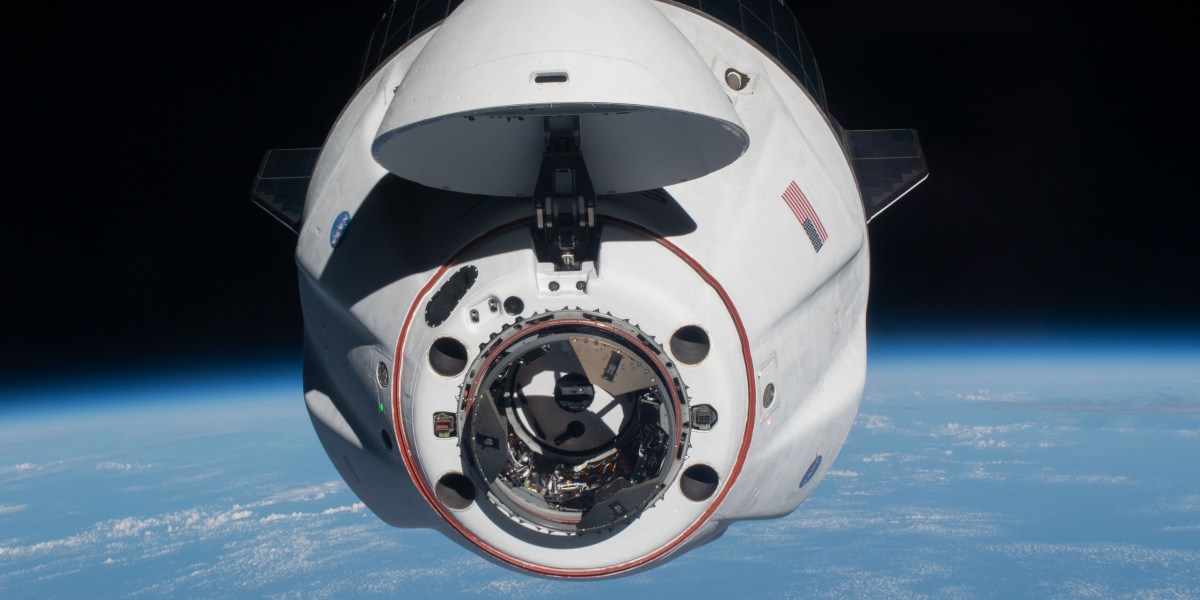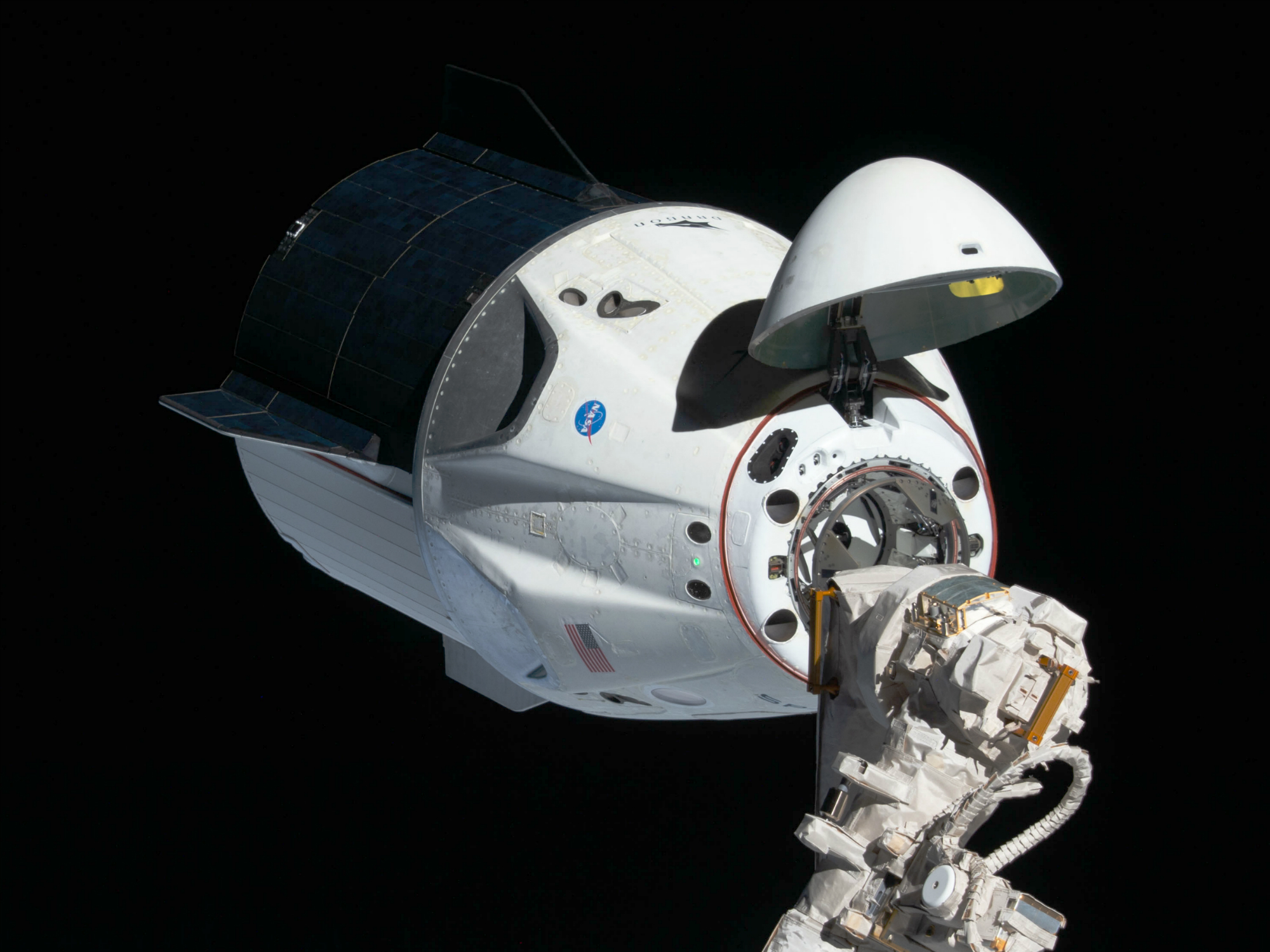
In-Depth Look At SpaceX’s Dragon Spacecraft
One of the most important aspects of any rocket that carries astronauts is the human-rated spacecraft. The spacecraft is responsible for many different tasks that are all necessary for the mission and the astronaut’s safety. SpaceX’s Dragon Spacecraft is very unique and innovative in a lot of different ways. Here I will go more in-depth into what makes up the Dragon Spacecraft.
SpaceX’s Dragon is made up of two main modules, this includes the trunk and the capsule. Additionally, the spacecraft utilizes Draco engines for altitude control along with an advanced parachute system for re-entry. Each aspect of the Dragon Spacecraft helps not only complete the mission at hand but safely transport humans into and back down from space.
The Dragon Spacecraft has had impressive success in recent years. The spacecraft has single-handedly helped put America back in space and launched astronauts off American soil consistently. Not only this but it has also provided SpaceX and the Falcon 9 with a lot of experience and use. All of this success comes from SpaceX’s innovative and unique design of the spacecraft.
Why Was The Dragon Spacecraft Made?

Prior to the Dragon Spacecraft being completed, for almost 10 years NASA had no way to get their own astronauts into space. After the last incident with the Space Shuttle, the program was stopped and NASA was without a launch vehicle. However, the agency still needed to get astronauts up and down from the International Space Station. NASA ended up paying Russia a lot of money over about 10 years and getting rides up and down from space on the Soyuz rocket. From the very beginning, NASA knew this option was not ideal. That is why in 2011 the agency started the Commercial Crew Program.
Here they picked multiple companies including SpaceX and Boeing and gave each a large sum of money to develop technology that could launch and land astronauts. Specifically, SpaceX used the money to further develop its Dragon Spacecraft. SpaceX knew they wanted to launch humans in the future and the Commercial Crew Program was the perfect opportunity. The Dragon Spacecraft had already been in development since 2004 soon after SpaceX was founded. NASA and the Commercial Crew Program gave the spacecraft a big boost that helped launch it to its current success.
Dragon Spacecraft Features

Trunk – The Dragon Spacecraft is made of two main sections. This includes the capsule, located at the top, and the trunk, which is positioned at the bottom or under the capsule. The trunk is the first feature of the spacecraft that I want to talk about. The trunk of Dragon has multiple purposes including carrying cargo, supporting the spacecraft, and providing power as well. Starting with the cargo-carrying capabilities which are very important for a lot of missions. The trunk of the spacecraft holds unpressurized cargo throughout the entire mission.
The trunk is about 4 meters tall and 4 meters wide, which ends up providing around 37 m³ of space. This is necessary for trips to the International Space Station and back. Often times they will transport different items that are needed or take things back to Earth. The next addition of the trunk is supporting the spacecraft. SpaceX mentions that the trunk is crucial in supporting the spacecraft and specifically the crew capsule during ascent. Finally, the trunk provides the necessary power to the spacecraft. On half of the trunk, there is a large array of solar panels. This helps provide power when orbiting the planet and when docked to the ISS.
Capsule – The next aspect of the Dragon Spacecraft is the capsule. The crew capsule has a long list of devices and technology throughout it to ensure every part of the mission goes smoothly. The capsule is capable of launching up to 7 astronauts in a single mission. The capsule also provides a space to transport environmentally sensitive cargo. Inside the capsule, there is a very sleek and minimalistic design. There are multiple seats along with 3 large screens that are used for operating the spacecraft during a mission. Unlike a lot of other human-rated spacecraft, the launch abort system is built into Dragon. In the event of an emergency and Dragon and the crew need to separate from Falcon 9, the launch abort system is used. This launches the capsule and crew far away from the rocket. The Dragon capsule uses 8 Superdraco engines positioned on each side to create around 16,000 pounds of force. The very top or front of the capsule is also used for different things including an ISS docking adapter or even a very large window for viewing Earth and Space.
Altitude Control – The capsule not only houses the 8 Superdraco engines but an additional set of engines to help with altitude control. Often times during space travel you need to reorient or slightly change the positioning of your satellite, space station, spacecraft, etc. This is especially the case when you are doing very precise maneuvers such as docking to the International Space Station. This is where the Dragon Spacecraft’s altitude control comes into play. Specifically, the Dragon Spacecraft is equipped with 16 Draco thrusters used to orient the spacecraft during a mission. These thrusters are positioned on different sides and angles of the spacecraft ensuring SpaceX can make very fine adjustments in practically any direction. The 16 Draco thrusters control apogee and perigee maneuvers along with orbit adjustment and altitude control. Each of the Draco thrusters is capable of producing 90 pounds of force in the vacuum of space. This power combined with the number of thrusters makes the capsule plenty capable of making the necessary maneuver while in space.
Parachutes – The final part of the Dragon Spacecraft that I want to mention is the parachutes. Parachutes obviously play an important role in the process of safely recovering the Dragon Spacecraft. While the atmosphere does a lot of the work when slowing down the spacecraft, the parachutes are needed for the remaining speed and energy. The Dragon Spacecraft has two sets of parachutes. The first set is called drogue parachutes and is the first one deployed. These are released soon after reentry and are meant to stabilize the spacecraft while it’s falling. These parachutes are a lot smaller in size and are not there to slow down the spacecraft significantly. This is the job of the main set of parachutes that deploy when the Dragon Spacecraft is a bit closer to the ground. Here 4 very large parachutes deploy and expand while the spacecraft is falling. Once each of the parachutes has fully opened up, it slows down the capsule to a safe speed for a water landing. These parachutes are massive and meant for the different unique challenges presented when slowing down a spacecraft. This includes the different stressors and challenges such as proximity to each other.
Conclusion
The spacecraft is arguably the most important part of any rocket carrying humans. Agencies and companies including NASA and SpaceX put countless hours and hard work into ensuring the crew of each mission is safe. This even includes if something were to go wrong during the mission. This has been the same process when building the Dragon Spacecraft. This spacecraft is made up of two modules including the trunk and capsule. The spacecraft also hosts unique altitude control along with an advanced parachute system. The Dragon Spacecraft has had immense success in recent years and has helped launch American astronauts off American soil for the first time in around a decade. In the future, there are likely to be a lot more successful missions with the Dragon Spacecraft.
